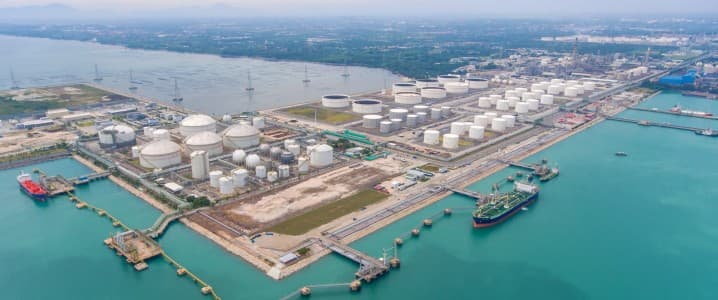China’s Efforts To Curb Oil Prices Are Futile

Crude oil imports into China dropped by almost 15 percent annually last month. While substantial, the drop is no reason for worry because it was caused by refinery maintenance season. What could be a reason for worry are rising benchmark prices.
Brent crude topped $72 per barrel for the first time in two years at the end of last week, with West Texas Intermediate briefly touching $70 before retreating. The reasons for the rally were tightening supply as demand for fuels began to improve in reopening economies in Europe and North America. This tightening, however, is causing headaches for large commodity consumers such as China.
Bloomberg reported last week how China is fighting the commodity price rally caused by shortages of virtually everything. These shortages, caused by supply chain disruptions and recovering demand, have prompted the Chinese authorities to implement a range of price control measures aimed at curbing the rally. These measures have had some success, although Bloomberg cites Goldman Sachs and Citi analysts as saying the war on prices is one even Beijing couldn’t win.
“The starting point of this crackdown is to maintain economic stability,” Dong Hao, director of Chaos Ternary Research Institute, a unit of the same-name commodities asset manager, told Bloomberg. “There is of course a choice to let the market freely adjust the allocation of resources through conventional market mechanisms. But this time, it seems that the social cost may be very large.”
A high social cost is not something the decision-makers would like to hear. However, sometimes there is not a whole lot they can do to rein prices in. Oil is perhaps the best example as China imports a lot of what it consumes in crude. In fact, as of last year, it was importing more than 70 percent of the oil it consumed. This is heavy dependence on imports and, consequently, on other price-setters.
Saudi Arabia is a case in point. A survey by Reuters suggested that the Kingdom could raise prices for Asian buyers for July deliveries as recovering demand pushes benchmarks higher. Saudi Arabia already did that once this year, in April, and the reaction from Asian buyers was far from favorable. Yet, there is little to do except reduce orders for Saudi crude and find cheaper oil elsewhere.
China is in luck here with Iran and Venezuela both eager to sell it crude at a discount. The country is already importing from the two U.S.-sanctioned states despite repeated warnings and even sanction action from Washington. And yet, it might be hard to boost these imports considerably—if it was easy, China would have done it the moment crude topped $50 a barrel.
Yet, there is something else China can do to rein in the price of oil: stop buying it. In May, Oilprice reported that China had tapped into its crude oil reserves the previous month, drawing some 280,000 bpd from them, per data cited by Reuters’ columnist Clyde Russell.
Analysts and other observers of China have been guesstimating the level of its strategic and commercial oil reserves for years, and while technology has helped dramatically, they are still in guess territory because China does not report inventory levels. And if these are close to capacity, as estimates suggest, China could probably afford to reduce its intake of foreign oil for a while.
This is speculation, but the 15-percent drop in oil imports is official data, and it will likely affect prices as soon as today. History shows that even when the reason for the decline in Chinese oil imports is something as seasonal as refinery maintenance, traders react and prices fall, even for a short while. From then on, it’s back to demand and supply.
For now, the demand picture is so optimistic, even the International Energy Agency has changed its tune that last month called for the suspension of all new oil and gas exploration to meet net-zero objectives. Last week, in an interview for Bloomberg Television, the IEA’s executive director said demand was recovering faster than previously expected, and unless OPEC+ put additional barrels on the market on top of the plans to restore 2 million barrels per day (bpd) by July, oil prices will be heading higher as the gap will widen.
What’s more, the IEA revised its forecast that oil demand would take years to recover to pre-pandemic levels. Some even said it may never recover to pre-pandemic levels. Now, the IEA says oil demand will be back to pre-pandemic figures by the end of this year.
For now, OPEC+ has no motivation to boost production more than planned—it’s been literal years since the cartel has seen oil prices so high. It has therefore made no indication that more barrels could be coming. However, more barrels could indeed be coming—from Iran.
This is not exactly good news for China and its efforts to avoid excessive inflation resulting from soaring commodity prices. It will be a delicate balancing act to keep the economy growing while keeping inflation under control.




